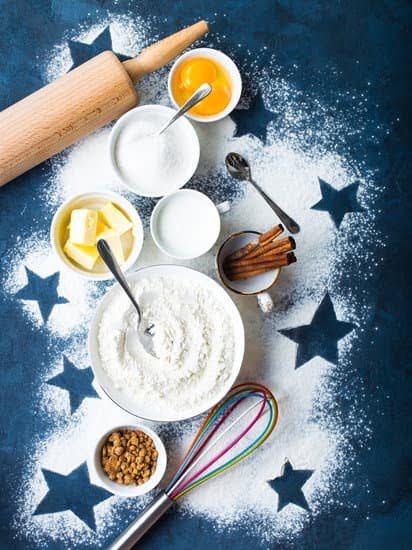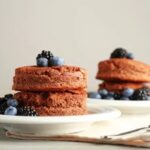The world of cake decorating is both an art form and a source of endless amusement. From elegant wedding cakes to whimsical birthday creations, people around the world are drawn to the allure of designing and creating edible masterpieces. However, amidst the beauty lies a comical side that often brings unexpected twists and turns. Welcome to the hilariously unpredictable world of cake decorating gone bad.
Cake decorating is a craft that requires precision, patience, and a keen eye for detail. It is an art that can elevate any occasion and leave a lasting impression on those who partake in its sweet delights. But sometimes, despite one’s best efforts, things don’t quite go according to plan. Fondant fiascos, over-ambitious designs, and struggles with tinting are just a few of the common mistakes that can lead to cake decorating disasters.
These mishaps may seem like moments of despair for aspiring bakers, but they often become opportunities for laughter and shared experiences when they go viral on social media platforms. The power of social media in magnifying cake decorating fails cannot be underestimated.
Memorable cake fails have taken the internet by storm, generating millions of shares and comments from amused viewers around the world. The unexpected fame that comes with these failures can have a lasting impact on the baker’s reputation – for better or worse.
In this article, we will explore the various aspects of cake decorating gone bad: from analyzing common mistakes that lead to epic disasters, to examining high-profile incidents involving professionals who stumbled during important events. We will also delve into personal anecdotes from experienced bakers who share their hilarious stories from the trenches. And fear not. We will also provide expert tips and tricks to help you avoid your own cake decorating catastrophe.
So buckle up and get ready for a journey through the surprisingly entertaining realm of failed cakes. While perfection may be elusive in cake decorating, there is beauty in embracing our mistakes and finding joy in the journey. Let’s raise a spatula to celebrate the unpredictability and hilarity of cake decorating gone bad.
The Common Mistakes
Cake decorating is a beloved art form that allows bakers to express their creativity and create stunning confectionery masterpieces. However, even the most experienced decorators can fall victim to common mistakes that can turn their cake decorating dreams into disasters. In this section, we will explore some of the most frequent pitfalls in cake decorating and how to avoid them.
- Fondant fiascos: Working with fondant can be a challenging task, even for experienced bakers. This smooth icing provides a clean canvas for intricate designs, but it requires patience and practice to achieve a flawless finish. Common mistakes include rolling out the fondant too thin or too thick, resulting in cracking or bulging on the cake’s surface.
To avoid these mishaps, it is crucial to knead the fondant properly and use powdered sugar or cornstarch to prevent sticking. Additionally, ensuring that the cake is completely cooled before applying the fondant will help maintain its shape. - Over-ambitious designs: It’s easy to get carried away with grand ideas when it comes to cake decorating. However, biting off more than you can chew can lead to frustration and disappointment. Attempting complex designs without having the requisite skills and experience often ends in disaster. Aspiring decorators should start with simpler projects and gradually work their way up to more challenging creations as they gain confidence and expertise.
- The trouble with tinting: Achieving vibrant colors in icing can be tricky, particularly when tinting frosting or fondant at home. Many decorators struggle with getting consistent shades or achieving specific hues without ending up with an unappetizing taste due to using excessive food coloring.
A helpful tip is to start with a small amount of color and gradually add more until the desired shade is reached. It’s also important to keep in mind that colors intensify over time, so allowing some time for the icing or fondant to develop its hue before adding more color is recommended.
By being aware of and avoiding these common mistakes, aspiring cake decorators can set themselves up for success. Taking the time to practice techniques and starting with simpler designs will build confidence and proficiency over time. With patience, perseverance, and a willingness to learn from mistakes, anyone can create beautiful cakes that leave a lasting impression on both taste buds and eyes alike.
Social Media Shares
In today’s age of social media, the power of the internet cannot be underestimated. It has the ability to amplify even the smallest mistakes and turn them into viral sensations. The world of cake decorating is no exception to this phenomenon. When cake decorating fails happen, they have the potential to spread like wildfire across social media platforms, causing embarrassment and laughter in equal measure.
The impact of social media on cake decorating fails is undeniable. With just a click of a button, a photo or video can reach millions of people around the globe in a matter of minutes. These fails often evoke strong reactions from viewers, who quickly share them with their friends and followers, leading to an exponential increase in popularity. What might have been a small mishap at a local bakery can quickly become an internet sensation.
There have been several memorable cake decorating fails that have taken the internet by storm. From gravity-defying designs collapsing to misspelled words that change the entire meaning of a message, these fails capture people’s attention and provide endless entertainment. Whether it’s a professional baker or an enthusiastic amateur, no one is immune to the possibility of a cake decorating fail going viral.
The unintended consequences of these viral fails can be both humorous and detrimental for the bakers involved. While some bakers embrace and laugh at their own misfortune, others may face severe criticism or damage to their professional reputation. In an era where online presence can make or break businesses, bakers must navigate this double-edged sword with caution and resilience.
Memorable Cake Fails that Took the Internet by Storm
One particularly memorable cake fail involved a wedding cake that was meant to be suspended from wires above the reception table – creating an enchanting centerpiece for guests to admire while dining. Unfortunately, due to faulty wiring, as soon as it was hoisted up into its designated spot, the cake came crashing down – right onto the bride’s unsuspecting grandmother.
This shocking and hilarious moment was captured on video by a guest, who then posted it on social media. Within hours, the video had amassed millions of views, sparking conversations about the importance of wedding cake safety.
Another cake decorating fail that quickly went viral involved a baker who misread a customer’s request to have a “Spider-Man” themed birthday cake. Instead of creating an impressive replica of Spider-Man in his iconic suit, the baker mistakenly crafted a cake with a less-than-impressive spider web design.
The customer, disappointed but also amused by the mistake, shared a photo of the cake on Twitter with the caption “When Spider-Man gets caught in his own web.”
The tweet was retweeted thousands of times and even caught the attention of the official Marvel Twitter account, which playfully commented, “Even superheroes have bad days. “.
These viral cake decorating fails not only provide entertainment for viewers but also serve as cautionary tales for both amateur bakers and professionals alike. They remind us that no one is perfect and that mistakes can happen even to the most talented individuals.
To avoid going viral for all the wrong reasons, bakers must approach their craft with humility and learn from these shared experiences. Ultimately, these social media shares have helped foster a sense of camaraderie among bakers worldwide – united in laughter and empathy through their shared mishaps and moments of unexpected hilarity.
Lessons Learned
Cake decorating disasters can be both frustrating and disheartening, but with a little knowledge and preparation, they can easily be avoided. Whether you are a beginner or an experienced baker, these tips and tricks will help you prevent your own cake decorating catastrophe.
1. Plan and Practice
One of the most important steps in avoiding cake decorating disasters is proper planning and practice. Before diving into complex designs or techniques, take the time to plan out your cake design in advance. Sketch out your ideas, choose the appropriate tools and ingredients, and ensure that you have everything you need before starting.
Practicing your cake decorating skills beforehand is also crucial. Experiment with different icing techniques, color combinations, or fondant decorations on a small scale before attempting them on a full-sized cake. This will give you the opportunity to troubleshoot any issues or make adjustments before working on the final product.
2. Start with Simple Designs
While it’s natural to aspire to create extravagant cake designs, starting with simpler designs can help build your skills and confidence. Begin by mastering basic techniques such as smooth buttercream icing or simple piped decorations before moving on to more intricate designs.
By gradually challenging yourself with increasingly complex projects, you can develop your skills without overwhelming yourself. Remember, Rome wasn’t built in a day – take your time and enjoy the process of learning and improving.
3. Use Common-Sense Tips
Sometimes it’s the simplest mistakes that can lead to cake decorating disasters. Here are some common-sense tips to help achieve professional-looking results:
- Ensure that your cakes are completely cooled before applying icing or decorations.
- Level your cakes before stacking them to create an even surface for decorating.
- Apply a crumb coat – a thin layer of icing that seals in any loose crumbs – before adding the final layer of icing.
- Invest in quality tools and ingredients to achieve better results.
Following these tips and tricks will help you avoid common cake decorating pitfalls and increase your chances of success. Remember, perfection is not the end goal – it’s the joy of creating something beautiful and delicious that matters most.
| Tips | Tricks |
|---|---|
| Plan and Practice | Start with Simple Designs |
| Ensure cakes are cooled before decorating | Level cakes before stacking |
| Apply a crumb coat before final icing | Invest in quality tools and ingredients |
The Beauty in Imperfection
In the world of cake decorating, there has been a recent rise in embracing imperfections. The trend of intentionally imperfect designs has become widely popular, empowering beginners to embrace their mistakes and find joy in the journey of cake decorating. This shift away from perfectionism has not only brought a fresh perspective to the art form but also celebrates the unique beauty that can emerge from unexpected mishaps.
One example of this anti-perfection trend is the “naked cake.” Rather than being fully covered in icing, naked cakes leave layers exposed, resulting in a rustic and natural appearance. These cakes often have visible flaws such as uneven frosting or crumbs peeking through, but that’s all part of their charm. Naked cakes have gained popularity for weddings and special events due to their raw and organic aesthetic.
Another example is the use of drip designs on cakes. These intentional drips create a messy, yet visually appealing effect that adds depth and dimension to the cake. Drips can be made with various toppings like chocolate ganache or caramel sauce, and they are intentionally allowed to run down the sides in an irregular pattern. This technique embraces imperfections while adding an artistic flair to the finished product.
By embracing mistakes and imperfections, beginner decorators are encouraged to experiment more freely without fear of failure. It allows them to focus on enjoying the process rather than solely aiming for a flawless final product. In turn, this mindset encourages creativity and innovation, leading to unique designs that stand out from traditional perfectly executed cakes.
| Imperfection Trend | Description |
|---|---|
| Naked Cakes | Cakes with exposed layers and imperfect frosting |
| Drip Designs | Irregular drips of toppings creating a messy, artistic effect |
The beauty in imperfection extends beyond just the aesthetic appeal. It also teaches valuable life lessons about resilience and acceptance. In the process of cake decorating, mistakes are inevitable, but they can be turned into opportunities for growth and learning. Embracing these mistakes allows decorators to develop problem-solving skills and think creatively to overcome challenges.
Ultimately, the embrace of imperfection in cake decorating is a celebration of the unique qualities that make each cake special. It encourages individuality, creativity, and personal expression. So whether you’re a beginner decorator or an experienced professional, remember that perfection is not always the goal. Embrace the chaos, celebrate the unpredictability, and discover the unexpected beauty that can arise from cake decorating gone bad.
In this section on “The Beauty in Imperfection: Embracing Mistakes in Cake Decorating,” we explore how imperfections have become trendy and popular in cake decorating. We discuss examples such as naked cakes and drip designs that celebrate flaws while adding charm and originality to cakes. We also highlight how embracing imperfections promotes creativity and resilience while teaching valuable life lessons. So let’s dive into the world of imperfectly perfect cakes.
Cake Decorating Fails
Cake decorating can be a challenging task, and sometimes, things don’t go according to plan. In this section, we will explore some hilarious stories from experienced bakers who have had their fair share of cake decorating gone bad moments. These personal anecdotes not only entertain but also serve as valuable lessons and reminders that even professionals make mistakes.
Laughter-inducing mishaps
One baker shares a story about a wedding cake they were tasked with decorating. The design was intricate and required precise piping work. However, in the hustle and bustle of the preparation, the baker accidentally used green food coloring instead of red for the flowers. As a result, what was supposed to be a beautiful bouquet turned out to be an amusing arrangement of green flowers on a white cake – definitely not what the couple had envisioned.
Another baker recounts their experience with fondant, one of the most challenging elements in cake decorating. While attempting to cover a sponge cake with fondant, they encountered countless struggles – from cracking and tearing to improper smoothing techniques. The end result? A lumpy and misshapen cake that resembled something more akin to modern art than an edible masterpiece.
How mistakes turn into memorable stories
Despite these mishaps, these bakers found humor in their failures and turned them into cherished memories. They learned valuable lessons along the way and grew as decorators. These stories have become anecdotes they now share with others as cautionary tales or simply for a good laugh.
By sharing these funny moments, bakers create a sense of inclusivity within the community. New decorators can relate to these experiences and find solace in knowing that even experts face challenges. It encourages beginners not to give up but rather keep experimenting and learning from mistakes.
Famous Cake Decorating Disasters
The world of cake decorating is not exempt from mishaps, even among the most experienced professionals. In this section, we will delve into some of the high-profile cake decorating disasters that have captured public attention and sparked widespread discussions. These incidents serve as a reminder that even the best in the industry can stumble and create cakes that fall far from their intended grandeur.
One notable example is the infamous “Simpsons Cake Fail” at a wedding reception in 2012. The couple had requested a three-tiered cake featuring edible figurines of themselves alongside Bart, Lisa, and Maggie Simpson. However, when it came time to unveil the masterpiece, what they got was far from what they had envisioned.
The faces on the figures looked distorted, with paint smudges and mismatched colors. The cake quickly became a laughingstock and ended up plastered all over social media platforms.
Another incident that made headlines involved a celebrity chef who was commissioned to create an elaborate dinosaur-themed cake for a popular children’s event. The cake was meant to be a centerpiece display representing various dinosaur species in a realistic and awe-inspiring manner.
Unfortunately, things did not go as planned when one of the larger dinosaurs collapsed during transport to the venue. Not only did this cause embarrassment for the chef, but it also led to significant financial losses due to last-minute replacements.
These stories demonstrate that even experienced professionals are susceptible to unexpected errors or accidents during high-stakes events. While these missteps may initially seem devastating, they often serve as learning experiences both for those directly involved and for budding cake decorators who can reflect upon them.
The Redemption Stories
Cake decorating can be a journey filled with both triumphs and failures. While many people may give up after a decorating disaster, there are those inspiring bakers who refuse to let their mistakes define them. These redemption stories serve as reminders that failure can often lead to unexpected successes in the world of cake decorating.
One such story is that of Anna, a baker who initially struggled with fondant fiascos. No matter how hard she tried, her fondant creations always ended up looking lumpy and uneven. Determined to turn her failures into triumphs, Anna sought advice from experienced decorators and practiced tirelessly to improve her skills.
Through perseverance and creative problem-solving, she discovered new techniques for working with fondant and eventually became known for her flawlessly smooth creations. Anna’s story serves as a shining example of how setbacks can fuel growth and ultimately lead to success.
Another inspiring tale comes from Michael, an ambitious baker who often found himself biting off more than he could chew when it came to cake designs. His elaborate visions would quickly become overwhelming once he started working on them, leading to messy and unrecognizable cakes. Instead of giving up, Michael learned to break down his designs into manageable steps and sought guidance from professional decorators.
With time and practice, he was able to execute even the most intricate designs flawlessly. Michael’s journey highlights the importance of planning and patience in achieving complex cake decorations.
These redemption stories not only inspire other bakers to persevere through their own struggles but also remind us of the beauty that can emerge from imperfections. It is through embracing our mistakes that we open ourselves up to new possibilities in cake decorating. By sharing their experiences openly, these bakers encourage beginners to find joy in the learning process rather than focusing solely on the end result.
Conclusion
Cake decorating may seem like a straightforward task, but as this article has highlighted, it is not without its challenges. From fondant fiascos to over-ambitious designs, and even the trouble with tinting, there are plenty of opportunities for things to go wrong. However, as the saying goes, “Sometimes you have to embrace the chaos.” In fact, there is a growing trend in cake decorating that celebrates imperfections and mistakes.
The rise of the “anti-perfection” cake decorating trend has opened up a whole new avenue for creativity and self-expression. Intentionally imperfect designs have become incredibly popular, showcasing a more whimsical and playful side to cake decorating. This shift in perspective empowers beginners to embrace their mistakes and find joy in the journey of learning and improving their skills.
It’s not just beginners who can benefit from embracing the unpredictability of cake decorating gone bad. Even experienced bakers have their fair share of mishaps and unexpected situations. These moments often turn into valuable learning experiences and memorable stories that bring laughter to both themselves and others. The ability to laugh at our mistakes is an essential part of growth and personal development.
In conclusion, cake decorating gone bad may initially seem like a disaster, but it can lead to moments of unexpected beauty and personal growth. By fearlessly embracing our cake decorating adventures – whether we’re beginners or seasoned bakers – we open ourselves up to new creative possibilities and the chance to find joy in our mistakes. So next time you’re faced with a cake decorating catastrophe, remember that even the greatest failures can become stepping stones towards success.
Frequently Asked Questions
How do you fix cake decorating mistakes?
When it comes to fixing cake decorating mistakes, there are a few strategies you can employ depending on the nature of the error. If you’ve made a minor mistake like smudging the frosting or creating uneven lines, you can try using an offset spatula or knife to smooth out the imperfections. If you’ve made a major mistake like piping the wrong design or color, one option is to scrape off the icing completely and start over.
Alternatively, you can get creative and use extra decorations such as sprinkles, chocolate shavings, or fruits to cover up any mishaps. Remember that practice makes perfect, so don’t get discouraged by small mistakes—that’s all part of learning and improving your cake decorating skills.
How do you know if a cake is spoiled?
It is important to be able to recognize if a cake has spoiled to avoid any health risks. There are a few signs that indicate a cake has gone bad. Firstly, check for any visible mold growth on the surface or sides of the cake, as mold indicates spoilage.
Secondly, pay attention to any off-putting smells emanating from the cake—an unusual or foul odor suggests that it is no longer safe to eat. Additionally, consider observing changes in texture; if the cake appears excessively dry or sticky and its color has significantly changed, this could also be an indication of spoilage. Lastly, trust your taste buds—if the flavor is odd or highly unpleasant when you take a bite, it’s best not to consume it.
How long can you keep a cake in the fridge before decorating?
To ensure optimal freshness and taste, it’s generally advised to keep an undecorated cake in the refrigerator for no more than three days before decorating it. This timeline depends on factors such as how well the cake was stored before refrigeration and whether it contains perishable ingredients like cream cheese frosting or fresh fruit fillings which may affect its shelf life. Proper storage is crucial: wrap your cooled and unfrosted cake tightly in plastic wrap or place it in an airtight container before refrigeration.
If you need to store the cake for longer periods, freezing is a better option. When properly wrapped and stored in the freezer, a cake can last for several weeks without significantly compromising its texture or taste.

Welcome to our cake decorating blog! My name is Destiny Flores, and I am the proud owner of a cake decorating business named Cake Karma. Our mission is to provide delicious, beautiful cakes for all occasions. We specialize in creating custom cakes that are tailored specifically to each customer’s individual needs and tastes.





